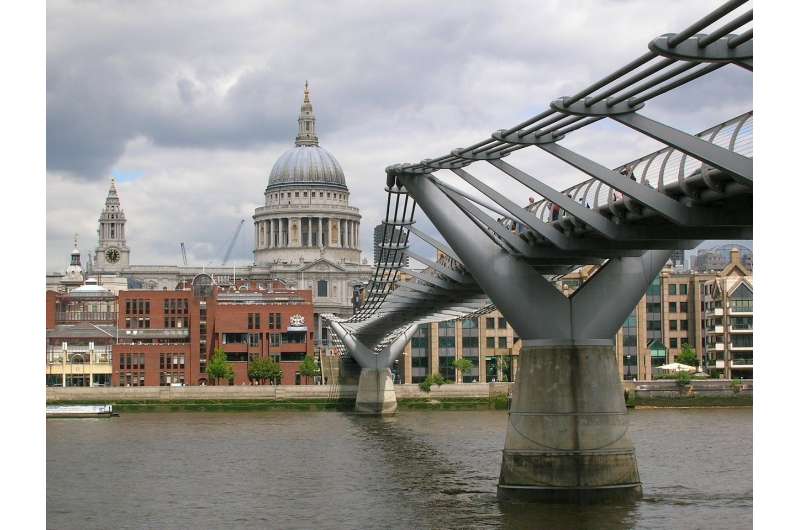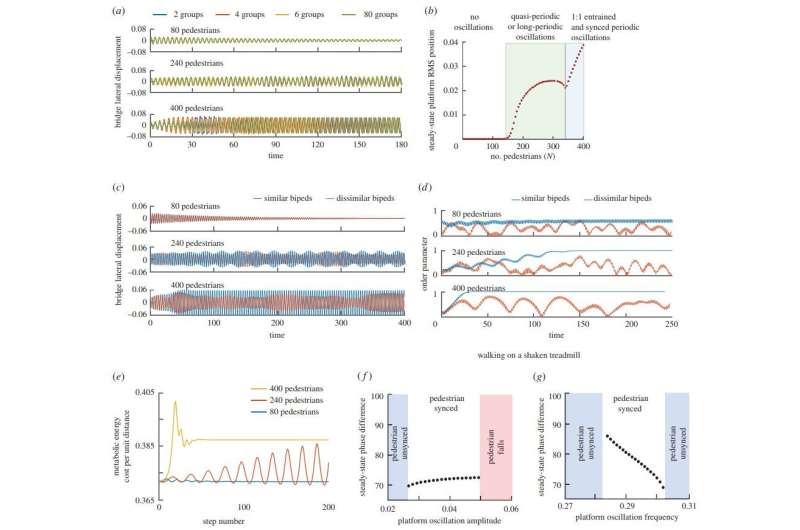October 31, 2018 report
New model offers more specifics about the swaying of the Millennium Bridge

Two researchers at Ohio State University have built a model to further explore the swaying experienced by the Millennium Bridge in London. In their paper published in the journal Biology Letters, Varun Joshi and Manoj Srinivasan describe their model and what it showed.
Back in 2000, the engineers who designed London's Millennium Bridge were surprised to discover that crowds of people walking across it during a dedication ceremony caused it to shake and sway—two days later, the bridge was closed for safety reasons. In subsequent studies, researchers found the bridge swayed because of the walking behavior of pedestrians. When the bridge moved slightly, they reacted like someone standing in a rowboat trying to keep it from capsizing. All of those people reacting caused a feedback loop which made the bridge unstable. In this new effort, the researchers have improved upon earlier models built to mimic the behavior of the bridge and learned more about the shaking and swaying.
The researchers first built their model back in 2015 with features that took into account such things as the impact of individuals moving in lockstep, shifts in weight, or even random actions such as people turning around. But that model was not able to factor in the energy cost of an individual working to stabilize their gait. In their new model, they have added an ability to take into consideration the impact of adjustments people make as they walk on an unstable surface.
The researchers discovered that the wobbling of the bridge did not require crowd synchrony, which prior studies had suggested was necessary for wobbling to get started. They also found that crowds syncing up and the bridge wobbling did not necessarily have to happen at the same time. The model also showed that as the bridge started to wobble, the people walking on it widened their steps, which required more energy, but offered more stability.

The engineers working on the wobbling problem did not have to wait for the latest model to fix it, however—they installed dampers that dramatically minimized both wobbling and swaying, making the bridge safe for pedestrian traffic.
More information: Varun Joshi et al. Walking crowds on a shaky surface: stable walkers discover Millennium Bridge oscillations with and without pedestrian synchrony, Biology Letters (2018). DOI: 10.1098/rsbl.2018.0564
© 2018 Science X Network



















